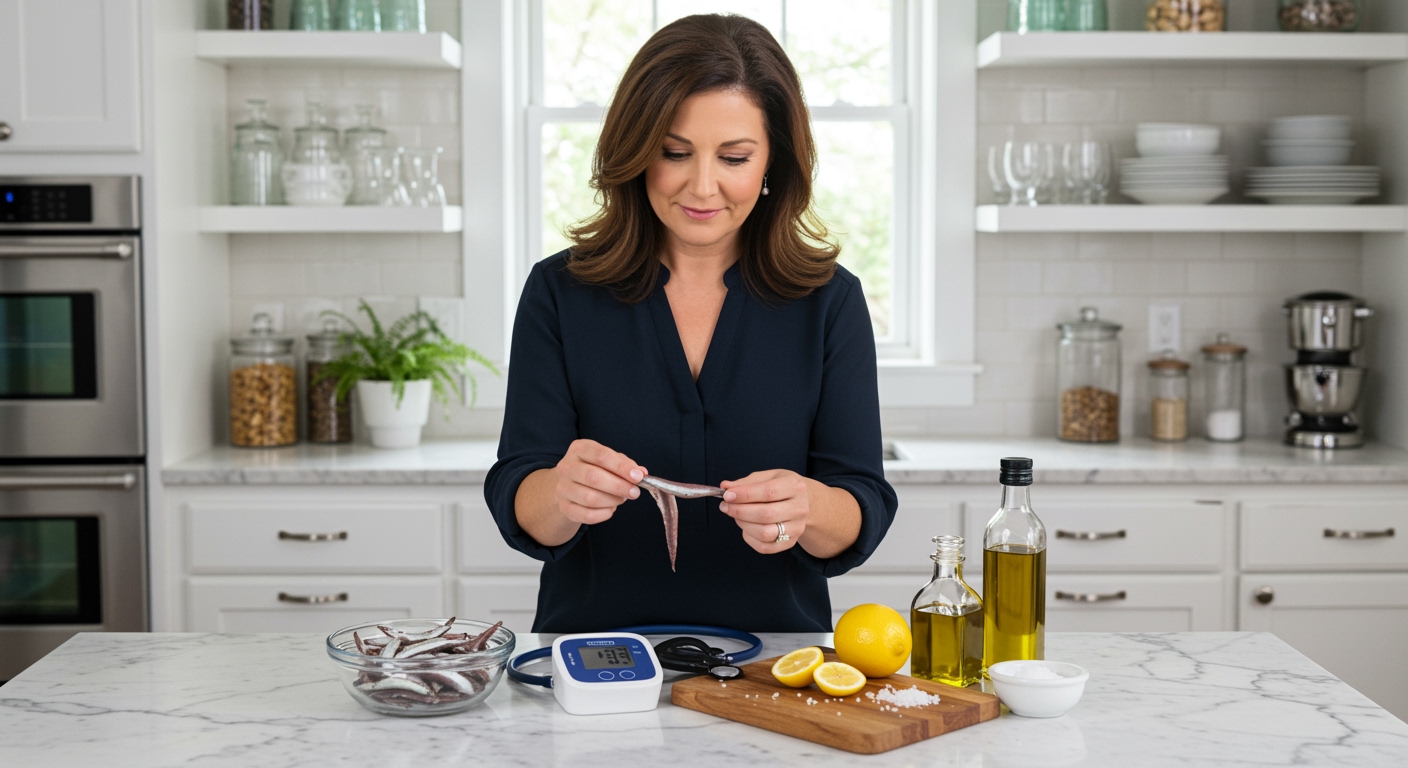✪ Key Takeaway: Radicchio contains potassium and nitrates that may help raise low blood pressure naturally through improved circulation.
Introduction
You grab that beautiful purple radicchio at the grocery store and wonder if it could help with your low blood pressure.
Many people focus on lowering high blood pressure, but those dealing with hypotension face a different challenge that gets less attention.
Hi, I’m Abdur, your nutrition coach and today I’m going to explain how radicchio affects low blood pressure levels and whether this bitter leafy vegetable can actually help raise your numbers naturally.
What Makes Radicchio Different From Other Leafy Greens?
Radicchio belongs to the chicory family and contains unique compounds that set it apart from regular lettuce or spinach.
This purple vegetable gets its vibrant color from anthocyanins, powerful antioxidants that support cardiovascular health in ways that green leafy vegetables cannot match.
The bitter taste comes from compounds called sesquiterpene lactones, which have been studied for their effects on blood vessel function and circulation.
Unlike many vegetables that primarily help lower blood pressure, radicchio contains a balanced profile of nutrients that can support healthy blood pressure regulation in both directions.
One cup of raw radicchio provides about 180 milligrams of potassium, along with folate, vitamin K, and nitrates that work together to support cardiovascular function.
The fiber content in radicchio also helps stabilize blood sugar levels, which indirectly affects blood pressure regulation throughout the day.
✪ Fact: Radicchio contains more anthocyanins than most red vegetables, making it exceptionally beneficial for blood vessel health.
How Does Radicchio Affect Blood Pressure Mechanisms?
Your blood pressure depends on how much blood your heart pumps and how resistant your arteries are to that blood flow.
Radicchio contains natural nitrates that convert to nitric oxide in your body, which helps relax and widen blood vessels for better circulation.
The potassium in radicchio works with sodium to maintain proper fluid balance, which directly affects the volume of blood your heart needs to pump.
When you have low blood pressure, your body struggles to deliver enough oxygen and nutrients to vital organs, especially your brain and kidneys.
The anthocyanins in radicchio help strengthen blood vessel walls and improve their ability to contract and expand as needed for optimal pressure regulation.
Research shows that these compounds can help improve endothelial function, which is the ability of your blood vessel lining to respond properly to changes in blood flow demands.
✪ Pro Tip: Eat radicchio with a small amount of healthy fat like olive oil to enhance absorption of its beneficial compounds.
Can Radicchio Actually Raise Low Blood Pressure?
The relationship between radicchio and blood pressure is more complex than simply raising or lowering numbers.
While radicchio does not directly increase blood pressure like caffeine or sodium might, it helps your cardiovascular system function more efficiently.
The potassium content supports proper heart rhythm and muscle contractions, which can help your heart pump more effectively when blood pressure is too low.
For people with hypotension caused by poor circulation or weak blood vessels, the nitrates and anthocyanins in radicchio may provide gentle support.
However, you should not expect dramatic changes in your blood pressure readings from eating radicchio alone.
The folate in radicchio helps produce red blood cells, which carry oxygen throughout your body and can help combat some symptoms of low blood pressure like fatigue and dizziness.
Think of radicchio as part of a comprehensive approach that includes proper hydration, adequate salt intake, and other lifestyle modifications recommended by your healthcare provider.
✪ Note: Always consult your doctor before making dietary changes to address blood pressure concerns.
What Are The Best Ways To Include Radicchio In Your Diet?
Raw radicchio provides the highest concentration of beneficial compounds since cooking can reduce some of the heat-sensitive nutrients.
You can add chopped radicchio to salads, sandwiches, or wraps for a bitter flavor that pairs well with sweet fruits like pears or apples.
Grilling or roasting radicchio mellows its bitter taste while still preserving many of its cardiovascular benefits.
Try combining radicchio with other potassium-rich foods like bananas, avocados, or sweet potatoes for a more comprehensive approach to supporting healthy blood pressure.
The recommended serving size is about one cup of raw radicchio, which you can easily incorporate into your daily vegetable intake.
Remember that consistency matters more than quantity when it comes to getting nutritional benefits from any food, including radicchio.
✪ Pro Tip: Store radicchio in your refrigerator crisper drawer and use it within a week for maximum nutrient retention.
The Bottom Line
Radicchio can be a valuable addition to your diet if you have low blood pressure, but it works as a supportive food rather than a direct treatment.
Good nutrition builds the foundation for good health, but it cannot replace proper medical care when you need it most.
I would love to hear about your experience with radicchio or any questions you have about managing low blood pressure naturally, so please share your thoughts in the comments below.
References
At NutritionCrown, we use quality and credible sources to ensure our content is accurate and trustworthy. Below are the sources referenced in creating this article:
- Healthline: Radicchio: Nutrition, Benefits, and Uses
- WebMD: Health Benefits of Radicchio
- PMC: Anthocyanins and Cardiovascular Health
- Nutrition and You: Radicchio Nutrition Facts





